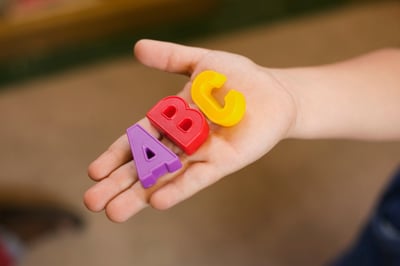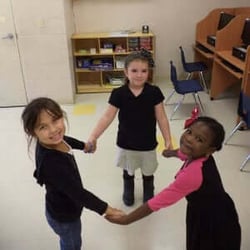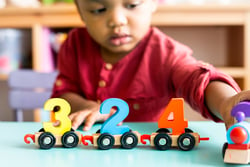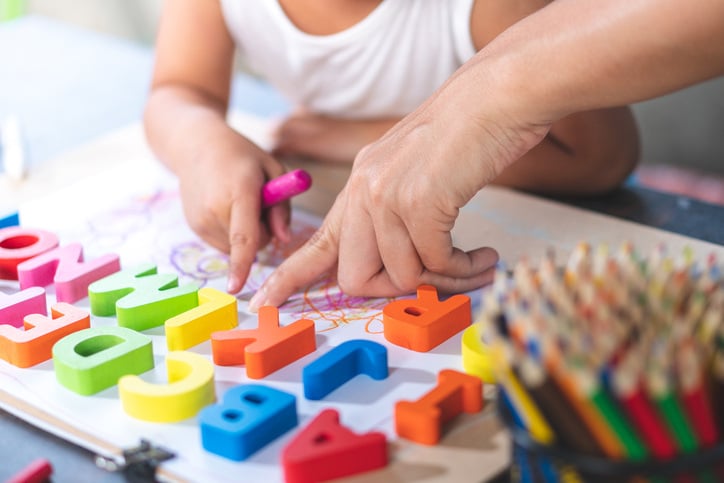
Letter recognition is an important skill for toddlers and preschoolers to learn, as it serves as the foundation of reading and writing. We'll explore the typical developmental curve for letter formation and phonemic awareness and provides fun, age-appropriate, low-cost ways for your child to master this most essential of literacy skills.
What Is Letter Recognition?
Letter recognition is generally accepted as the ability to identify alphabet letters, both uppercase letters and lowercase. Being able to name a specific letter when surrounded by other letters is also an accepted definition.
Teaching Letter Recognition to Toddlers
If your child is two to three years old, he or she may sing the alphabet song — but can't yet identify written letters. About 20 percent of children can recognize a few letters by age 3, often the letter that starts his or her own first name as well as other letters contained within the name. You may also notice that some of your child's scribbles are starting to look like letters, especially the first letter of his or her name.
especially the first letter of his or her name.
To help your child gain competency with their letter recognition skills, encourage singing of the alphabet song and look through books together that share information about letters. Consider providing your child with magnetic letters and other play materials that encourage learning alphabetical order. PBS.org provides more information about child development in this arena, while Teaching2and3YearOlds.com provides suggestions for fun ways to encourage toddlers to learn letter shapes, sounds and letter names.
Preschooler Letter Recognition Tips
By the time most children are older (four years and up), they know more than half of capital letters and five to 10 lowercase letters. About 30 percent can recognize all the letters of the alphabet in both cases. Preschoolers often notice letters in their environment and understand their related to letter sounds, an insight known as the “alphabetic principle.” They also recognize that numbers and letters are distinctively different in purpose, while letters that are similar in shape (p/q and b/d) can still often be confusing. You can find more developmental information at PBS.org.

HandsOnAsWeGrow.com provides 50 alphabet activities for your preschooler to enjoy, including Squirt the Letter. In this game, parents write random letters on the chalkboard. Also, have on hand alphabet blocks and ask your child to match what he or she sees on the chalkboard with what appears on a block. When your child makes a good match, then he or she can squirt the chalkboard with water in a spray bottle to make the letter disappear.
Another recommended game is Trash Can Alphabet Review. Take scraps of paper and write a letter on each one, using a marker (or you could use crayons or whatever else you have on hand). Point to a letter and ask your child to identify it; when the correct answer is given, your youngster can crumple up the paper and toss it into the waste can. Once the game is over, you can smooth out the scraps and play again when desired. You can also check out the many other suggestions offered in the article.
Alphabet Recognition Worksheets
One of the great things about the internet is finding free activities for your children. You can easily find free, downloadable letter recognition activities and worksheets. They're can be different games, or sometimes coloring sheets that will help your child learn the alphabet. Megaworkbook.com has many great suggestions to pick from.
Easy Outdoor Activities for Alphabet Recognition
When the weather is nice, it's only natural to want your children to play outside. On those days, here is a simple game from ICanTeachMyChild.com that can help to teach your pre-K children the alphabet. Take sidewalk chalk and create a pathway of letters on your sidewalk or driveway. Let your child ride his or her bike over this path, singing the alphabet song as he or she rides over each letter. Do the same thing as your child walks (or skips, or jumps, or whatever else works!) along the path.
And, here's a game you can play outdoors (or move indoors). Take masking tape and create letters. Then, let your child actively play with the letters. This writer's child loves to take toy cars and use the masking tape as letter-shaped roads — and you can casually work the name of certain letters into the conversation as your child is playing on it.
Horizon's Early Childhood Education Programs Offer Literacy Skill Development and Kindergarten Readiness
It's never too soon to start building a solid foundation for your child's intellectual development and academic success, from STEM to language skills to social and emotional development, children deserve every opportunity to thrive.
At Horizon, our qualified teachers and staff are committed to your child's growth in all these areas. Lesson plans meet or exceed Ohio's Step Up to Quality top-rated standards, while we strive to ensure our curriculum is taught in small groups in ways kids love. With financial aid and scholarship opportunities, accessibility to a quality education for any child is never an issue. Our goal is to transform kids' lives for the better and prepare them for life at school, and we've been doing just that for 46 years and counting.
Learn more about our approach to early childhood education and schedule a tour at a Horizon center near you.








